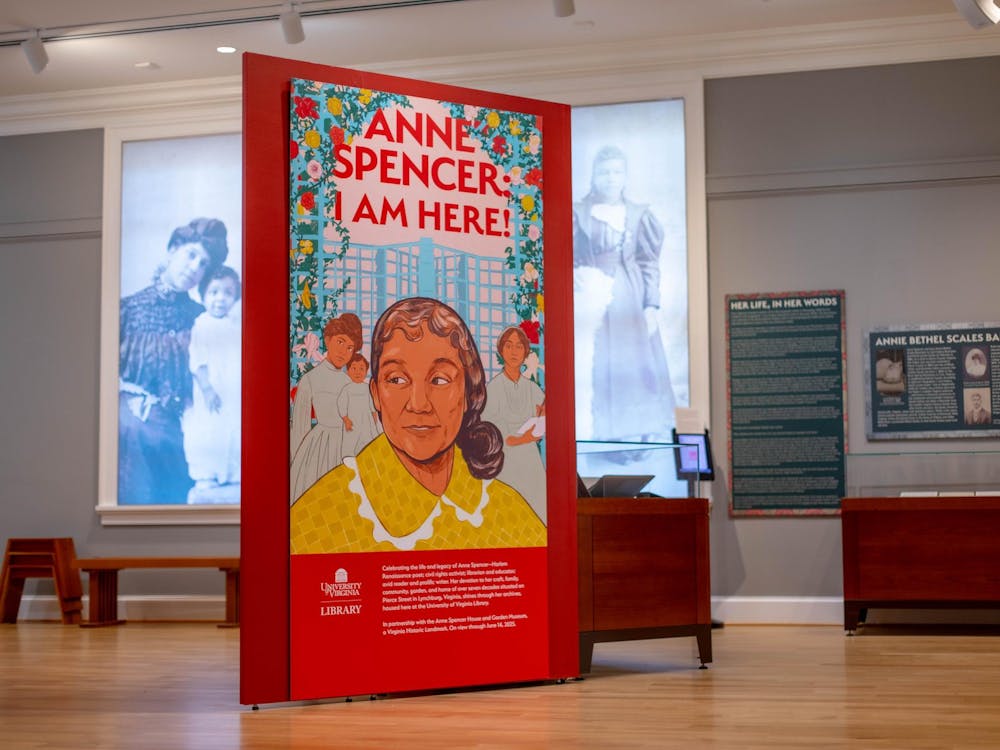The Virginia Film Festival’s “Race in America” series is a collaboration with James Madison’s Montpelier and is, in the words of the Festival website, “a multi-faceted series of films and discussions inspired by and built around Montpelier’s ongoing commitment to exploring its own legacy of slavery.” After an impressive first year, successful largely for its inclusion of special guest Spike Lee, the series’ second run includes documentaries — such as “16 Bars” and “Charlottesville,” which discusses the white supremacist rallies of Aug. 11 and 12, 2017 — alongside fictional movies.
As an adaptation of a true story, “Green Book” falls somewhere between the two categories. The stars are taking on the roles of real-life counterparts, of course, and the tale itself is compressed, altered and made more tonally whole — in short, a piece of history is transformed into a work of entertainment.
The film was shown at the Paramount Theater Thursday, Nov. 1 at 7:00 p.m. It was introduced by Jody Kielbasa — director of the festival and vice provost for the arts — who, in turn, was introduced by University President Jim Ryan.
Aside from giving a personal anecdote about seeing “To Kill a Mockingbird” at the Festival as a law student, Ryan also provided more information about the title. A green book, as would later be seen in the movie, was a 20th-century guide for African-American travelers in search of hotels or theaters — places of safe passage in a segregation-plagued country. According to Ryan, the Paramount Theater was one of the few “green book” venues. He discouraged the applause which followed his announcement, clarifying that black spectators were confined to the balcony of the theater.
Kielbasa’s introduction was briefer than Ryan’s. Perhaps sensing the audience’s eagerness, he only spoke for a few minutes before leaving the stage, signaling the start of the movie.
Like every other story working from historical inspiration, “Green Book” is faced with the same responsibility — how to give proper homage to the history in question. Director Peter Farrelly, known largely for crude comedies like “Dumb and Dumber” and the notorious “Movie 43,” oversees the film with a surprisingly restrained guiding hand. The tone is humorous at times, maybe to a fault, but that humor is mostly tasteful. Whether dramatic or goofy, “Green Book” is meticulously planned so that nothing offends except what is obviously supposed to.
The story opens with Tony “Lip” Vallelonga (Viggo Mortensen) working at the Copacabana as a waiter, bouncer and general tough guy. When the Cabana is closed for renovations, Vallelonga must find another source of income to support his wife Dolores (an excellent Linda Cardellini) and their kids.
That source comes in the form of Don Shirley, played by Mahershala Ali — the unquestionable standout of the film. From the moment he strides onscreen, clad in a cream-and-silver robe and what seem to be diamond-studded loafers, anyone in the audience who recognizes Ali from past roles in “Moonlight” or “Hidden Figures” knows to expect a drastic, dramatic departure from his previous characters. Shirley as portrayed in “Green Book” is a brilliant snob. He abhors smoking cigarettes, eating with his hands or shoplifting. He is impeccably well-spoken.
Basically, Shirley is the antithesis of Vallelonga — so once their characters meet in Shirley’s decadent loft, the unlikely-buddy dynamic is established. For those unfamiliar, Shirley was a Jamaican-American pianist renowned for his innovations of classic tunes. In the film, he is planning a tour through the American South and needs a driver and a bodyguard — or, as Shirley so delicately puts it, someone with the “ability to handle trouble.” Vallelonga fits the bill and, although his racism holds him back, he needs the money. So he agrees, marking the start of an unusual relationship.
As Vallelonga and Shirley journey further and further south, their dynamic morphs from strained work acquaintances to something resembling friends — per the rules of this sort of movie. They journey through states and concert venues, becoming more comfortable with one another and setting aside their preconceived notions. Vallelonga realizes Shirley is a virtuoso. Shirley realizes Vallelonga is a caring husband and father, helping him write love letters in some of the movie’s most hilarious scenes. In short, each accepts that the other is a person.
It’s a sentimental road-trip tale that wraps itself up neatly, leaving viewers with thoroughly warmed hearts. Depending on the viewer, however, those fuzzy feelings might be tainted with the sense that some aspects of the story weren’t properly explored.
“Green Book” presents two forms of racism in its characters. There is the obvious, clear-cut prejudice of the concert hall owners who refuse to let Shirley dine with the white audiences or use the same bathrooms, confining their esteemed guest to servant’s quarters. Then there is the comparatively goofy racism of Vallelonga, always disguised as one of the character’s jokes and meant to be laughed off.
Vallelonga gets away with it because, in the film, he is more caricature than character. He participates in a hot dog-eating contest to raise money for his family. He steals a cheap, polished stone from a highway store because it’s “fun.” When two black plumbers fix the Vallelongas’ sink, Dolores offers them glasses of water. After they leave, Tony throws the glasses in the trash.
It’s an uncomfortable moment that verges on real, though unpleasant character development until a few scenes later, when Shirley interviews Vallelonga for the job and asks him if he anticipates problems with having a black employer. Of course not, Vallelonga exclaims, saying that he and his wife had recently entertained a couple of black friends in their apartment. “We had them over for drinks.” The audience is expected to laugh, and on Thursday, the predominantly white crowd did.
Vallelonga, although he grows closer to his employer throughout the film and confronts concert hall owners for a few of their more blatant acts of racism, has meager depth or growth when compared to Shirley. The pianist’s character is compelling, tortured, made irresistible by Ali’s handling of the figure — and also remains largely obscure to the viewer. It seems strange that Vallelonga was chosen as the protagonist, but this mystery is lessened when considering that Vallelonga’s real-life son contributed to the screenplay.
There is no major flaw within “Green Book” to render it unwatchable — on the contrary, it is a supremely entertaining film bolstered by Ali’s performance, which at least merits an Academy Award nomination. But its glib treatment of racism, shielded by a veil of humor which either side-steps or perpetuates the problem, makes the movie a weak inclusion for the “Race in America” series. Among a collection of films which puts some of the country’s most relevant concerns under an earnest spotlight, “Green Book” amuses but ultimately asks little of its audience.






